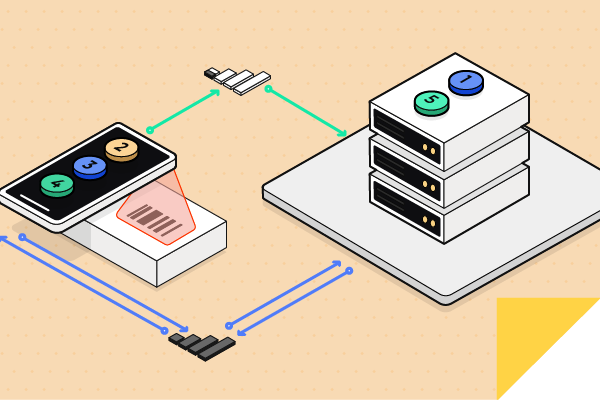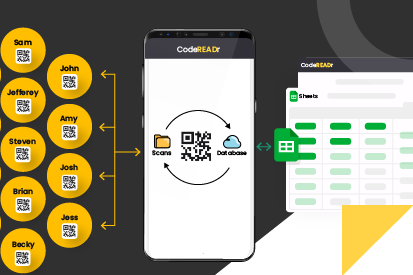February 1, 2019 • 10 min read
The Best Way to Scan UPC/EAN Barcodes

CATEGORIES
SOCIAL SHARE
How smart is Smart Scan?
Think of a touch computer, smartphone, or tablet as a magic wand auto-capturing the right barcode.
Validate against a database online or offline
With this method, each barcode scanned is checked against your database of UPC and EAN barcodes for which you want to collect data (quantity, condition, disposition, etc.).
Importantly, we covered this technology in our blog article about Inventory Audits.
With this in mind, how can the hosts “cooperate” with contact tracers? The CDC published an article about contact tracing in schools titled, “Considerations for Case Investigation and Contact Tracing in K-12 Schools and Institutions of Higher Education (IHEs).” As of the writing of this blog article, the CDC article was last updated on Aug. 5, 2021.
Choose the right Barcode Scanner Modes with Smart Scan
This technology enables you to significantly improve the productivity of your workforce. Also, Barcode Scanner Mode selections help your app-user target the right barcodes. Furthermore, Smart Scan technology ensures that the right barcode one is captured.
The technology is based on contextual rules based on filters and filter sets for the various scanning situations (the ‘context’) your app-user might encounter. Within those filters, you define the target barcode value (or values) to auto-capture. Notably, the app-user doesn’t need instructions – it’s all pre-configured online by the administrator.
Optimize settings for the barcode formats you need to capture
For example, if you need to scan the smaller footprint version of UPC-A barcodes (known as UPC-E) or the smaller footprint version of EAN-13 barcodes (known as EAN-8), you will need to have them enabled on the Advanced step when optimizing the scanner for your app-users.
For example, let’s say your database only includes 12-digit values representing UPC-A barcodes. If so, when your app-user scans a UPC-E barcode of 8-digits, the app will show that as “Invalid. Not in the database.” That’s because clearly, an 8-digit UPC-E scan won’t match the 12-digit UPC-A barcode in the database.
However, if you check the setting for UPC-E EXPAND, the app will automatically expand the 8-digit UPC-E code to the 12-digit UPC-A code equivalent. In that way not only does the app-user know they are scanning the right barcode but the scan record will show the expanded value when importing to your external database for further processing if needed.
What are the most common EAN barcode formats?
- EAN-13 (13-digits)
- EAN-13 2CHAR ADDENDA (13-digits plus 2-digits), and EAN-13 5CHAR ADDENDA (13-digits plus 5-digits)
- EAN-13-ISBN (13-digits)
- EAN-8 (8-digits)
- EAN-8 2CHAR ADDENDA, and EAN-8 5CHAR ADDENDA
What are the most common UPC barcode formats?
- UPC-A (12-digits)
- UPC-A 2CHAR ADDENDA (12-digits plus 2-digits), and UPC-A 5CHAR ADDENDA (12-digits plus 5-digits)
- UPC-E (8-digits), and UPC-E EXPAND (converts 8-digit UPC-E to 12-digit UPC-A)
- UPC-E 2CHAR ADDENDA (8-digits plus 2-digits), and UPC-E 5CHAR ADDENDA (8-digits plus 5-digits)
- UPC-E0 (8-digits starting with 0)
- UPC-E1 (8-digits starting with 1)
Why is UPC-E special?
UPC-E is a shortened version of UPC-A commonly used for shelf labels and items needing barcodes with a smaller imprint. If your database only includes UPC-A barcodes but you also need to scan UPC-E barcodes, use the setting “UPC-E EXPAND” which will reformat the 8-digits to 12 digits and be validated accordingly.
What does ADDENDA mean?
UPC-A, UPC-E, EAN-13, and EAN-8 sometimes have an extra barcode to the right of the main barcode typically used to encode additional information for newspapers, books, and other periodicals. They are referred to as 2CHAR or 5CHAR ADDENDA.
What does ISBN refer to?
It stands for “International Standard Book Number” which is a numeric commercial book identifier. The setting “EAN-13-ISBN” covers books assigned with an ISBN on or after 1 January 2007. For books prior to that time, you would need to use our Alter Scan Value feature if you need to validate against a database.


